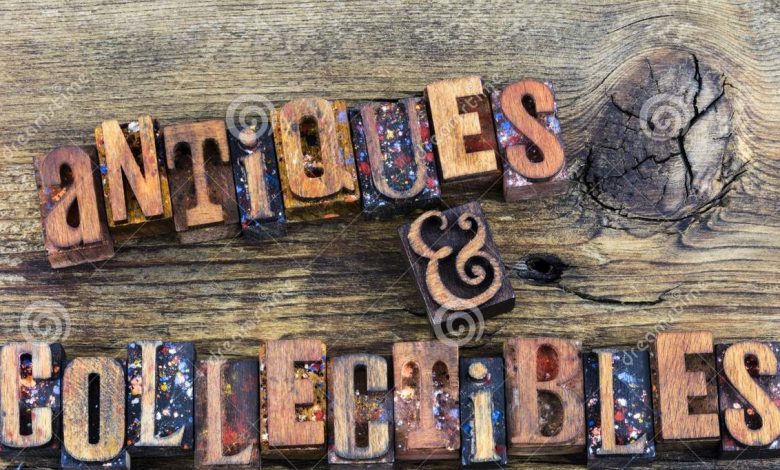A GUIDE – HOW TO SELL ANTIQUES & COLLECTIBLES ONLINE

COLLECTIBLES ONLINE
You want to sell your antiques or collectibles online but before you get started there are a few basics that you need to know. Online auctions from eBay to uBid.com and Bidsquare online Auctions are becoming a more common venue for sellers of everything from teddy bear collectibles to antique armoires.
RESEARCH
Before you list an item on an online auction, search for your item or similar items. Watch some of these auctions until they close. Do this over the course of several weeks. This will give you a good indication of how many similar items there are currently up for auction, how many auctions are successfully completed and, the prices commanded for the item. If there are many similar items to yours listed that are not selling or selling for a low price, price your item accordingly. Conversely, if there are only a few similar items that are selling for a high price, you’ll be able to price your item appropriately.
UNDERSTAND THE LISTING PROCEDURES
Take some time to do an online tutorial for new sellers. eBay offers a very thorough tutorial. You’ll learn how to set up a listing, the importance of good photos and how to include them in your listing. This is the time-consuming part for new sellers and takes some time to get up to speed. Good photos and clear descriptions are key to ensuring a successful auction because your listing is all that potential bidders have at their disposal to make their buying decision.
ACCURACY
Online auctions simply post your merchandise as described. They do not verify the accuracy of the item, that the merchandise actually exists, or even guarantee that you will follow through with the sale. As a seller, you want to be as accurate in describing the condition of your item, both the good and the bad points. If there is damage, mention it in the description and show photos. The more upfront and accurate the description, the more likely the buyer will be a satisfied customer who doesn’t demand his/her money back. Buyers will call you on any unmentioned flaws and cause you justifiable grief.
IT’S A BUYER’S MARKET ONLINE
Online auctions are more of a gold mine for collectible auctions buyers, rather than for sellers. Buyers can search for the manufacturer, color, and/or style number. The old days when the world seemed larger and items seemed scarce are gone. Online auctions have reduced the perception that an item is rare. Before online auctions, antique hunters would have to scour high and low for their favorite item and often end up paying a high price. Now, with online auctions, the scarcity of collectibles is reduced when you can search, for example, a Coca-Cola picnic cooler and see that there are currently 78 available for auction on eBay. It brings the price down of these items – not so good for sellers.
Also read- Why Are NFT Marketplaces So Crucial For NFT Trading?
FEES FOR SELLER
Online auctions are set up so that there are no fees charged to buyers. All fees associated with an online auction are the responsibility of the seller. Keep in mind that listing fees, reserve fees, final auction fees, and display fees are how online auctions make their money. You’ll need to factor in these costs when you are determining your selling price. Buyers generally pay for shipping and handling in addition to the final selling price. However, you can factor shipping into your price and indicate so on your auction. This is attractive to bidders because they know the final cost including shipping and handling and can help to draw bids to your auction.
eBay offers a “Buy It Now” feature where sellers can list items at a fixed price rather than through an auction. The advantage to a seller is that you may sell an item quickly if a buyer is willing to meet your price. The disadvantage is that you’ll never know if an auction might have given you a higher price.
DETERMINING YOUR SELLING PRICE
The lower the starting price the more attractive the auction is to bidders. Don’t start your auction so high that bidders are turned off. You want to start a bidding frenzy, not scare off bidders. Avoid putting a reserve on an item unless it is of great value. You pay an additional fee and it doesn’t make sense for a low-priced item.
Feedback sections are a common feature of an online auction. This is the place on the auction website where buyers and sellers can check the reputation of the seller or buyer. Moreover, previous buyers and sellers can post their comments on their experiences with an individual. It’s a good indicator as to whether the seller or buyer is an individual you would feel comfortable doing business with, but even a spotless record doesn’t mean that your experience will go as smoothly. After the auction is completed, check the buyer’s feedback immediately for any warning signs of non-payment or multiple returns. This information may help you to proceed carefully to complete a smooth transaction.
POST YOUR RETURN POLICY
Let bidders know if you will accept returns or if all sales are final. However, a flexible return policy will make your auction more attractive to bidders.
PAYMENT METHODS
Avoid cash payments because if there is a dispute, there is no paper trail to document how much you paid. Credit card payments through PayPal, a secure third-party company, are a very common payment method. Credit card payments protect both the buyer and seller if there is a dispute.
INSURANCE & ESCROW
Insurance protects the buyer and the seller. It protects up to a preset amount but there are limitations with any insurance. Escrow services are widespread and a good idea for more expensive items.
UNHAPPY WITH YOUR SELLING EXPERIENCE
There are a few avenues of recourse if you are an unhappy seller. First, contact the buyer immediately by email and/or phone to clarify the problem if they are unhappy with him or her. If this doesn’t happen or is unsuccessful, you can leave negative feedback or contact the online auction house as they will likely have a dispute resolution process, or contact the police if you feel fraud is involved.





